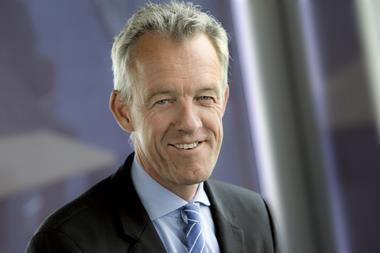European asset managers failed to grow their total fee revenues in the first half of 2017 despite assets under management increasing, Moody’s Investors Services said today.
Downward pressure on fees and changing asset allocations were the main causes, according to the rating agency.
Total advisory fees were largely flat in the first six months of the year, up by just 1% compared with December, Moody’s said. When adjusted for the impact on assets under management of Henderson’s merger with Janus, fees were unchanged.
Combined assets under management in the surveyed group of 21 managers* grew by 4% to €9trn in the same period; if the assets of US-based Janus are included the growth rate increased to 6%.
Net inflows for the group amounted to €117bn, compared with net outflows of €7.8bn in the first half of 2016.
Fees were largely flat due to increased demand for low-cost multi-asset solutions and passive products, a trend Moody’s said it expected to continue.
“Despite supportive markets during the first half of the year, European asset managers were unable to grow their fee revenues,” said Marina Cremonese, vice president and senior analyst at Moody’s, who authored the report.
“This reinforces our concerns regarding the secular headwinds facing active asset managers.”
However, the stagnation of advisory fees in aggregate masked broad variation between individual asset managers, according to the rating agency.
It noted that bank-owned managers recorded a 0.8% increase in net revenues, while net revenues at insurer-owned managers fell 1.7%.
Independent asset managers’ fee revenues increased by 3.5%, although this shrank to 2% when the impact of the Henderson-Janus merger was excluded.
The Henderson-Janus merger completed in May.
MiFID II research cost rule to drive consolidation
Separately, Moody’s said MiFID II was likely to accelerate consolidation in the European asset management industry as a result of the requirement that managers pay cash fees for any external research they use for investment decisions. Previously this was bundled in with the cost for trading.
The emerging trend is for European asset managers to absorb the cost of fees for research rather than pass on the cost to clients.
Moody’s said this added to operating costs and would squeeze the profits of smaller asset managers.
“Small asset managers are particularly exposed because they tend to consume more external research than their larger peers, due to their more limited in-house research capabilities,” said Cremonese.
Vontobel today became the latest manager to publicly announce it was taking the costs of research onto its own books for all funds and mandates governed by MiFID II rules.
It said the decision would result in additional costs “in the low-single-digit millions of Swiss francs per year”, which were already factored into the its three-year business objectives published at the end of August.
Fixed income specialist Muzinich & Co has also said it would absorb research costs.
In a statement, the group said: “While we remain highly focused on our own in-depth proprietary analysis, we are committed to ensuring our investment teams also continue to have access to leading third-party market research. This tried and tested approach has enabled us to deliver attractive, risk-adjusted returns in client portfolios for nearly 30 years.”
*Allianz Global Investors, Amundi Group, Anima Holding, Ashmore Group, Aviva Investors, AXA Investment Managers, Azimut Group, Credit Suisse Asset Management, Deutsche Asset Management, Eurizon Capital, GAM Group, Janus Henderson Investors, Jupiter, Legal & General Investment Management, M&G, Mondrian Investment Partners, Natixis Asset Management, SAM Investment Holdings, Schroders, Standard Life, UBS Asset Management












No comments yet